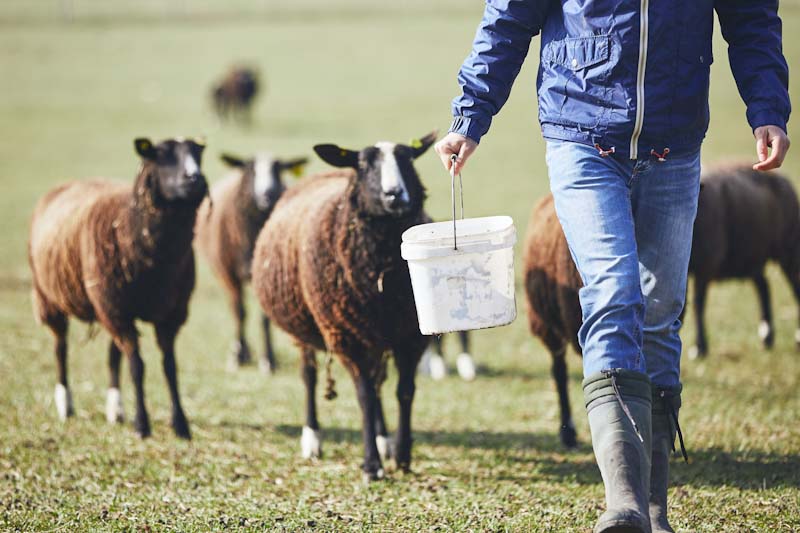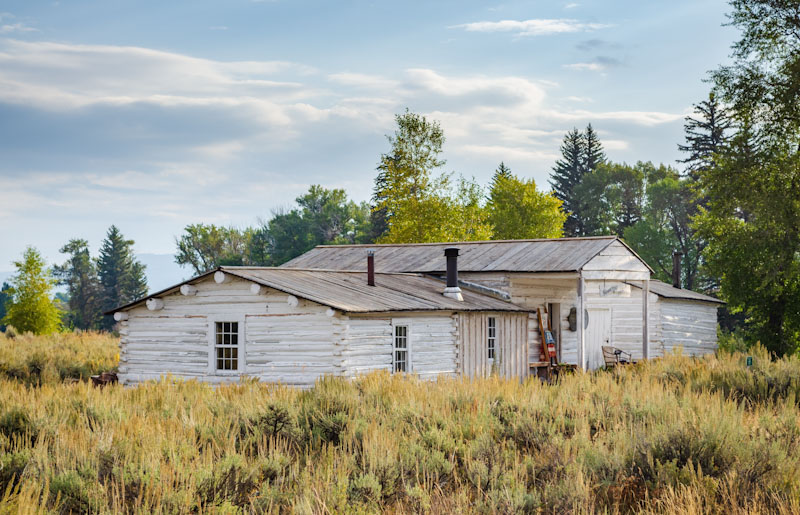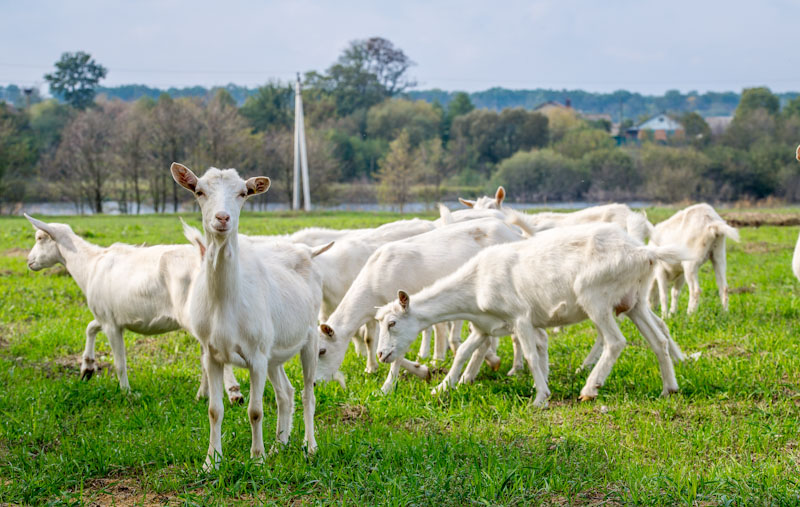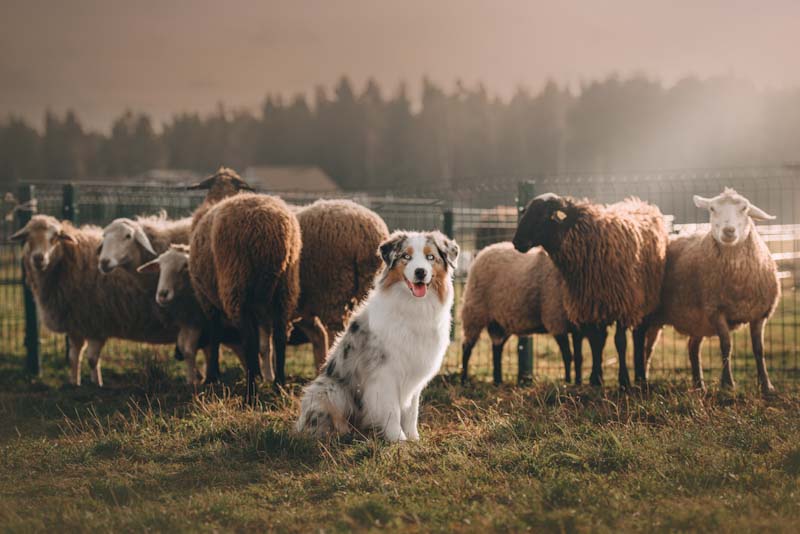It seems that the food shortages, the soaring gas prices, and the lack of trust in the supply chain have made folks reconsider their priorities. Crowded cities are no longer the desired place to live for many, and more and more people are getting into homesteading after moving to rural areas.
Now regardless if you want to quit your day job to become self-reliant or if you want to try a new hobby since you have the space and time available, you can make your homesteading experience a little easier by learning from those before you. They say that trial-and-error is the best learning experience, but when it comes to homesteading is better to have a head start and know where to begin.
No homesteading project, small or big, is complete without having a few dependable animals, and in today’s article, we will make sure you start right by listing a group of animals that are a must-have for your homestead. You may know that chickens are the first choice for every homestead out there, but animal husbandry goes beyond chickens. So let’s look at the animals one should consider for their homestead.
A grazing animal or two
When it comes to grazing animals, you have to decide if you should keep a cow or a sheep. This, of course, depends on what you need the animal for. Perhaps you want it for meat or milk or wool. You may say that you can also eat sheep, but not everyone likes the taste of mutton. In this case, a cow is more desirable since not only can it produce more meat, but it is also the preferred meat choice for many. Even more, with the right breed, you can get a dual-purpose cow that becomes a source of both milk and meat.
If you want to make your own clothes, and textile production is envisioned as a source of income, then you will opt for sheep. If you follow this path, you will need to decide if you want more sheep and if you have the space to accommodate all the grazing animals.
For small homesteads, one or two grazing animals may be enough for the needs of a family, but if you want to raise livestock for profit, you can imagine that you need a lot of space for your animals.
Getting a cow
Old folks say that no farm is complete without a cow, and this is your best choice if food is your main concern. You will need to do a little bit of research to decide which breed is best for your budget, meat preference, and region.
The most popular beef cattle are Angus, Hereford, and Texas Longhorn. If you lack space and you can’t handle big animals, you might want to consider the smaller Jersey cow. They are good milk producers, and they provide delicious beef.
The number of cows you keep will also impact your homesteading budget since feed costs will go up, depending on the number of animals you have, and you also make sure you can provide enough pasture.
Earn Your Food Independence NOW
Getting sheep
A lot of folks prefer sheep as their starter or training animals since the feed costs and maintenance are pretty low. Unlike cattle, sheep don’t require heavy-duty fencing, and this will considerably reduce your costs. Sheep also don’t require feeders or waterers, and they can grow well on grass alone. The main problem with sheep you may encounter is that these animals are more susceptible to parasites and worms compared to cattle. An infestation could do real damage to your sheep before you are able to spot it.
Dairy goat
A miniature dairy goat is usually the preferred choice for many homestead beginners since they are low maintenance and provide milk for their families. These goats are obtained by breeding Nigerian dwarf goats with purebred American goats. There are many breeds you can choose from, but I recommend going with the Nigerian Dwarf breed from the start.
Get a buck and a doe since the does will produce milk to feed their young. They will lactate for up to eight months after giving birth, and they have no problem sharing their milk. They are an all-around breed, and they are highly productive despite their small size. Each doe will produce up to two quarts of highly nutritious milk per day.
A recommended setup for your homestead is comprised of one buck, two does, and the kids they birth. However, it is important to mention that when you want to limit the breeding and separate the buck from the does, you will need a wether (castrated buck) to keep them together. If you isolate the buck and don’t provide company, it will get depressed, stop eating, and may even die.
Meat rabbit
Meat rabbits are a smart choice for your small homestead since they don’t require much space, being housed in cages or hutches. They cohabitate well with other animals, especially fowl, so you could build a large chicken or duck coop and house both your chickens/ducks and rabbits.
Keeping a “bunny” farm can be highly productive because rabbits breed like rabbits, pun intended, and they will provide ample meat. If the situation goes out of hand and you end up with too many bunnies, you can sell the offspring and make some extra cash.
If you want to raise rabbits, here’s an idea that will prove useful for your homestead. The poop of your rabbits is highly valuable for your garden since it’s an excellent fertilizer with its high nitrogen content. Since it also stinks, you would want to hang the cages above a mulch pile. If you do so, the poop will compost with the mulch, and you will get rid of the smell.
Ducks
As I’ve mentioned at the beginning of the article, a lot of folks pick chickens as their first birds for the homestead, and for a good reason, since there are breeds that are excellent layers. But how about getting some ducks as well, since these can be all-around birds that will improve your meat and egg production?
My breed of choice is the Muscovy duck, which technically is not really a duck since it has geese descendants. These ducks haven’t been hybridized and are wilder in nature than your average ducks, which makes them more self-reliant. There are outstanding foragers, and they like to take to the sky if you don’t clip their wings. Perhaps their best attributes are that they raise their young, they are quiet, so you won’t deal with noise complaints from your neighbors, and most importantly, they will help you get rid of garden slugs.
A Muscovy duck is larger than its hybridized cousin, being able to grow up to 15 pounds and provide double the meat. When it comes to eggs, even though they are not as productive as chickens, the eggs they lay are more nutritious. So even if you would have half as many eggs compared to chickens, they are highly nutritious, and they make up for this downside by providing a better meat ratio than chickens.
Pigs
Keeping pigs is hard work, and if you decide to get some, it’s recommended to make your life easier by picking a few Kunekune pigs (originating from New Zealand). These are medium-sized pigs and have a much more pleasant temperament than their American cousins. These are fat and round pigs and the females grow to be between 100 and 180 pounds, while males usually grow between 200 and 250 pounds. They have short snouts, and in their case rooting in the ground will not be a problem; they also won’t challenge fences.
The main advantage of these pigs is that they are grass-based, and they love to forage to procure their food. They are not dependent on grains like other breeds, and if you have a pasture for the cows or sheep, these pigs are an ideal choice.
Feeding your animals
Once you get the animals, one of your most important jobs will be to feed them and keep them well-fed all year round. Here are a few things you should know based on information gathered on-site at my father’s farm. He also uses an organic mash which he prepares as follows: He uses 2 cups of dry feed per animal and puts it in a five-gallon bucket, and then pours enough water to cover the feed. It lets it soak overnight so that the grains are turned into porridge.
Feeding the Cows
- Daily pasture grazing is recommended
- Hay as needed in the winter
- Mineral lick
Feeding the goats
- Daily pasture grazing is recommended (make sure there are broadleaf plants and bushes on the pasture since the goats will prefer these instead of grass)
- One cup for each goat of organic alfalfa pellets in the morning and at night one cup of organic chicken grains
- For debloating, you will need to give your goats baking soda
- Hay as needed, especially in the winter
- Salt lick
Feeding the ducks
- Daily pasture grazing is highly recommended
- At night, provide them with feed so that they will return to the coop. They will continue to forage if they are not well fed
- Additionally, you can also give them kitchen scraps at night.
Feeding the pigs
- In the morning, provide them with one cup each of mash, and at night give them chicken scraps. Since there will be times when there aren’t enough kitchen scraps, it is recommended to give them one cup each of mash.
- Hay as needed
Feeding the rabbits
- Hay as needed since it helps their digestion
- Half a cup (you can even give them one full cup, depending on their size and appetite) of organic alfalfa pellets in the morning and at night.
- Fresh leafy greens daily (oregano, wireweeds, dandelions, sunflower comfrey, mint, etc.)
Concluding
Raising animals for your small (or big) homestead is not rocket science, even though some say it’s a continuous learning process. At first, this endeavor will require a lot of research on your side, and besides the work you put into raising the animals, you also need to have patience. Things will improve with time, and your work and dedication will provide you with high yields. Nothing beats that feeling you get when providing food for your family from your own self-sufficient operation you’ve built.










radar | February 15, 2023
|
I helped out at a dairy farm for about 6 months, milking in the old fashioned 1950s era stantions. They had their two goats penned up in what I would call half a typical backyard in an average “old town” area); and their garden next to it on the other side of a fence (convenient I presume). They were way off the gravel road and their chickens stayed near the farmhouse (front yard to a fence and went into their coop-barn every night. The boy was selling eggs, so the chickens they kept met their supply and demand (beyond their dinner planning).– I would guess they had 25 chickens and maybe a dozen ducks.
What I don’t know is how much actual land would be preferable for goats and chickens. Do you have an idea about how many acres would be desirable for goats, chickens, ducks, rabbits and a large garden, along with shade trees (preferably fruit and nuts?
TAL | February 21, 2023
|
1/4 acre pasture land per goat is what I had when I raised 3 goats, with a good shed for shelter. They got along pretty good and didn’t try to breach the fence.
.
25 Chickens & ducks can forage on an acre of pasture/forest land, amongst the goats, cows or pigs with no problem. Mine don’t wander too much farther than a 50 yard radius around their coop.
.
Bunnies are easy, because you have to keep them caged. If you try to keep them in a fenced yard, they will dig to China to get under that fence, I Am NOT Joking! And once they’re out, they don’t like coming back and predators find them very tasty too. Research bunny cages, they’re easy to build.
.
Cows need 1 acre of pasture land each. I raise one bull & 2 heifers & calves on 4 acres, broken up into 3 paddocks for rotation grazing and to separate the guy from the girls when out of breeding season. And yes, I let my cows procreate the ol’ fashioned way. They seem to enjoy it way more than having a Human arm stuck way up there to get pregnant. I also loan out my bull to other homesteaders, and they loan me theirs. This keeps the gene pool from getting to incestuous.
.
I’ve never raised pigs, because a friend of mine does and we barter beef & chicken for pork. If you raise pigs, make damn sure you have a really good fence specifically for pigs, buried about 16″ in the ground. My friend has had pigs dig under a fence many times until he finally buried it deep enough. Pigs love to dig, just like bunnies.
.
.
Good shelter is a must, and heavy duty too. When a cow lays down, up against your shelter wall, it better be able to take some weight when the cow hits it.
.
Also, don’t forget WATER! Having water handy by your shelters makes a world of difference! Packing 26 gallons of water per day for your critters can be a real chore if the water supply in not near your shelters, especially in the Winter, when Frost Hydrants are your Best Friend! Ditch Witches are a Godsend.
.
The CORRECT fencing & posts, for each particular animal are another thing to research & plan for.
My garden is 40′ x 80′. I only use 40′ x 40′ each year for the garden, and I mulch with leaves & grass, and put my animal pooh on the other half for that year. The only thing I have to buy for the garden is Lime every year, otherwise the animals provide all my fertilizer.
.
Standard size fruit & nut trees need approx. a 30′ x 30′ spot to grow properly, semi-dwarfs & dwarfs, about 15′-20′ square.
.
I have 12 acres in Northeastern WI, but only use about 6 for all my animals, garden, orchard & home. The other 6 is forested, and we have deer, bear, turkey, & pheasants wander thru on a fairly regular basis.
.
Hope this helps!
john silvers | February 16, 2023
|
Uhhhh…..no mention of chickens? I’m pretty much putting them at the top of the list for animals you want to have around.
jfkjr | March 7, 2023
|
Yeah I don’t know what’s up with some of these so-called ‘Survival writers’ Chickens should be the first choice?. And only choice if you could only have one variety of animals in terms of food supply. (a good protection dog with be the first all around necessity) And the recommended animals here would amount to too much to handle for one or two people and would be seriously detrimental to opsec and other necessary daily chores. What ever happened to the best writer on Survivopedia who went under the pen name of Mahatma Mujesbude? He wrote a a similiar article on this exact subject. And many other superior articles And I couldn’t find it?
Paul Smith | March 25, 2024
|
Chickens should not be your only source of animal protein. Chicken is loaded with PUFAs which are not your friend.
For long term, ruminant animals should be your bedrock.
TAL | February 21, 2023
|
I’d just like to mention what should have come at the end of this article……………………………………………….Butchering Tools & Facilities.
Butchering chickens, ducks & rabbits doesn’t take much more than a hatchet, knives, a big pot for scalding, and an electric plucker is a nice luxury.., except for the bunnies, of course.
.But the big boys need a little more, like a way to get the cow or pig off the ground for skinning & slaughter, and somewhere cold to do the aging, butchering & wrapping. And whatever you do, Don’t Forget The Freezer!
There’s a lot more to think about when raising livestock, besides just feeding & housing.
John Philip Morgan Jr. | March 25, 2024
|
If its heavy, Ill hook it up on a gambrel, (like a deer) ,have a pulley over a stout limb and inch my tk. foreward. Works well ,one man.
G_J_ | February 22, 2023
|
Sheep can be milked, but if they are stressed they won’t let down their milk. That’s why it’s not seen much on a commercial level. For someone with just a few sheep they know and are comfortable with and treat nicely, shouldn’t be a problem. Supposedly sheep milk makes the best ice cream by far.
Lisa | February 22, 2023
|
I agree Chickens shud be the top of the list. I have 2 acres and came with rabbits. Highly recommend the rabbit neck wringer aka Hopper Popper, silent efficient and also usable for chickens. Frankly, i prefer rabbit to chicken.
Have an orchard, fruit and nut trees. Where I am, mesquite is good. That & Moringa are drought tolerant. My middle pasture is empty right now. Will be adding steers. They are better than horses, will eat weeds. BTW, we have had a lot of free water from the sky. The chickens eat weeds and love them. ALSO, check out the weeds. Most can be eaten by the rabbits and us, or used medicinally. A little weed pulling will cut the feed bill. Do not spray to kill them. I highly recommend Moringa, that is a multi vitamin. Mesquite flour (25%) replacement makes a higher protein bread.
The problem with steers is the grow out period. A smaller breed is the Scottish Highland. Also a newer breed from Austrailia. The Square Meater is smaller,, shorter legs and ready for butcher at 13 months rather than 18-24 plus. To have a bull, I’ll need more acreage,
Met a lady with two city lots. 1/4 acre. She has rabbits, chickens, sprouts seeds for the rabbits and has aquaponics (?) raises talapia and another fish, the top is her garden.
That is being prepared!!
Misty | March 27, 2024
|
Lisa what is moringa? Is it a bush or shrub? Is it good for rabbit grazing?
Radar | February 23, 2023
|
Tal, Thanks for your advice, including about butchering. That helps me plenty, since I plan on moving sometime, so it gives me an idea about how much acreage I would need; and in the meantime It helps me think about what I can do with my current property.
TAL | February 24, 2023
|
You betcha Radar! Good Luck to you & yours!
jfkjr | March 7, 2023
|
Radar, Sell it while the price is right before a major economic collapse/crises because of the demand now and temporarily move into the rural area you are interested in by renting in a trailer or campground community (they usually allow dogs and pets). up to three persons can survive quite well on a minimum of one acre, much better on more, of course, however everybody is wise to this lately especially with mainstream news now displaying articles almost weekly on how to surivive a freakin nuke war and small plots of bare land in the best locations are getting scarce…if you can find any at all.
ZuckerRat | July 7, 2023
|
Farm kid here… be careful with cattle, especially if you are not accustomed to them. Keep in mind, cattle are large animals and they can injure or kill you without even trying (or meaning to). They are not as easy to manage… some are fence crawlers. And, they are a large enough animal that you will NOT force them to do anything that they do not want to., at least not without squeeze chutes, etc.. Certain breeds are stubborn, some are flightly and nervous, others are just nasty. The term “never turn your back on an Angus cow” was not written in vain.
For the money, especially for livestock neophytes, I would recommend goats. They are small and easy to handle. They give high quality A2 milk, meat and wool (certain breeds). You CAN force a goat to do something it doesn’t want to (without a squeeze chute). They are not nearly as dangerous. A horny Billy can give you a good head butt, but I don’t think anyone has ever been killed by a goat. They will not only live, but will THRIVE on scrub grass and weeds. Keeping them contained will be your biggest challenge… they are agile and good climbers.
Chickens, ducks, meat rabbits. Take a look at what kind of animals are mostly kept by people living in 3rd world countries. Learn from people who know what hard times are.
radar | July 7, 2023
|
Chickens is top on my list (eggs and meat). Then guinea pigs (can be raised in a house or outdoor shaded porch. Genea meat value is 1 pound. Meat rabbits. Ducks or geese (but geese can be noisy at daybreak, neighbors may get mad for a “backyard” town or city backyard. Plus, you have just notified everyone that you are housing ducks..
Kupunalani | July 7, 2023
|
I’d take chickens over ducks in that I don’t have large amounts of surface or natually running water and have long, hot, dry and wildfire prone summers. Ducks need a lot of water even to eat their food which gets it dirty immediately.. They are extremely messy and drakes definitely need to be kept away from chicken hens. They try to mate them, have very different sexual ‘parts’, and end up butalizing and killing the hens.
A good protective rooster is essential on a homestead. As is a good protective dog.. I have both.
Guinea pigs and rabbits are a lot more my size both for handling and eating rather than needing to process even a goat or sheep quickly. I don’t even have a real refrigerator or a freezer now, but have seen the toxic mess one turns into if the electricity is off for more than a day or two such as after a hurricane. I also figure that I’d have plenty that needs to be done in such a situation beyond taking on a desperate attempt to save frozen foods in those two days… starting immediately the power goes out…. with no running water or other utilities.
Misty | March 27, 2024
|
One thing in this article that was inaccurate was that rabbit dung stinks. It doesn’t really have an odor.
The urine does. You need to have a litter box and change it regularly for the health of the rabbits as well as odor control. Recycle the hay you use into your garden.
t c white | March 25, 2024
|
icelandic chickens.
meat, eggs,
ancient breed that take care of themselves, summer or winter.
lay eggs, care for young.
KupunaLani | March 26, 2024
|
Yes, very resilient and ‘communicative’.. mine gently but persistently ‘remind’ me that their water is down or that they prefer the fermented scratch ‘supplementation’.. they follow me around when I’m working outside to catch any bugs when I move things around. They also have very diverse feathering and personalities which is a plus on a homestead with few neighbors..